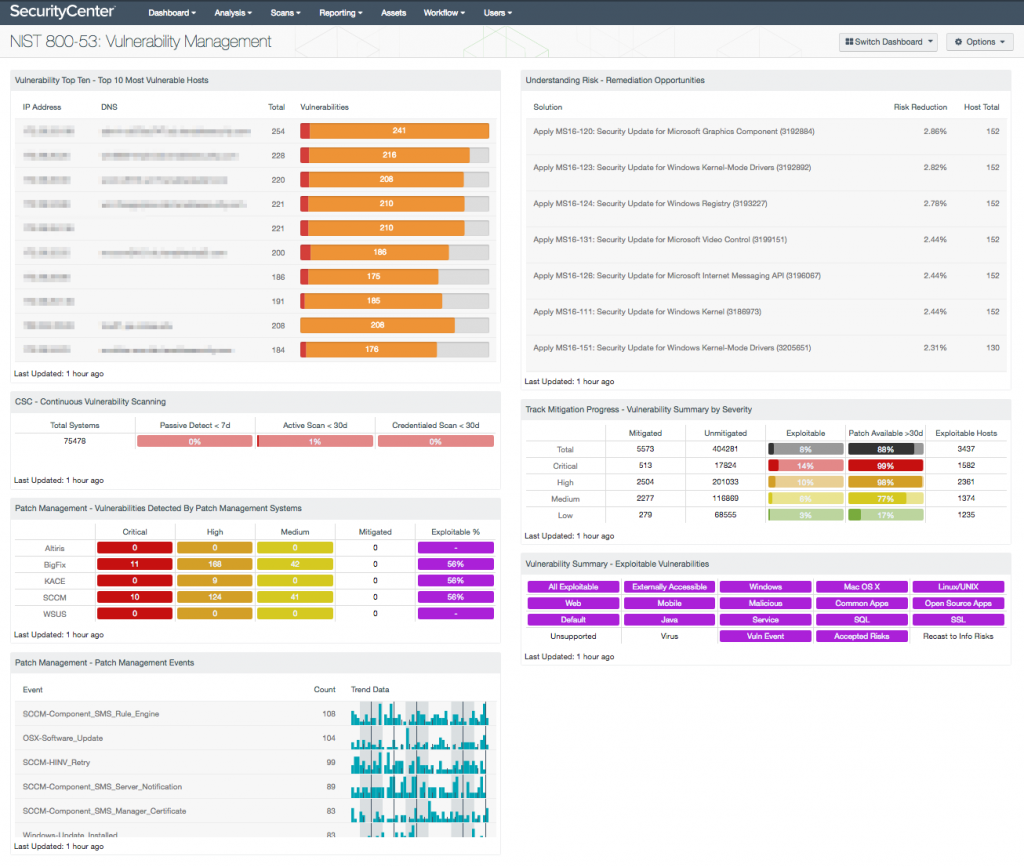
Tenable: Improving Security through Visibility and Continuous Monitoring
The evolution of today’s enterprise network environments changes both the risk landscape and traditional security assumptions. Recent trends such as the migration towards “DevOps”, “agile” software development methodologies, containerization and the ongoing migration to various forms of cloud computing all serve to accelerate the changes that security professionals must understand and adapt to.
Unfortunately, many of these trends are taking place beyond the purview of the security organization, who often remain unaware of these changes and their implication. This lack of awareness creates dangerous gaps in security policies and infrastructure, gaps that can be exploited by attackers.
The rapid pace at which software vulnerabilities continue to emerge is also a major security issue, as each vulnerability increases the available attack surface. In 2016, a total of 6,449 vulnerabilities were disclosed in the Common Vulnerabilities and Exposures database. This translates into 1,612 per quarter, 537 per month, and 17 per day. New vulnerabilities are typically exploited within hours after disclosure, which amplifies the need to address these weaknesses as soon as possible. Old vulnerabilities lurking undiscovered deep within the infrastructure also continue to persist, creating additional vectors to attack. Vulnerabilities must be discovered and mitigated.
Then there is the human factor. Clearly, no security program is perfect, and perhaps the weakest element in security are the humans involved. People make mistakes. People get lazy. People don’t follow rules. Weaknesses in human behaviour leads to weaknesses that can be exploited.
The solution to these issues is visibility.
Comprehensive monitoring of IT infrastructures provides the visibility required to discover and reduce risk exposure. Given that infrastructures are essentially organic in that they are in a constant state of change, monitoring must be performed on a continuous basis so that any changes to risk exposure are quickly detected and mitigated early. This monitoring must be pervasive and must also be automated to minimize the effort in performing the analysis.
Tenable’s Technical Director for APAC, Richard Bussiere, said: “Tenable can help solve this problem by identifying cracks in an organization’s infrastructure, and mitigate the risk by providing the instrumentation and analytics to watch out for vulnerabilities, misconfigurations, and indications of compromise.”

Additionally, the Tenable platform offers specific technologies that are tailored to discover the presence of and assess the risk associated with emerging IT trends such as the use of containerization and the various cloud deployment models. These technologies allow the security organization to fully grasp the security implications of these trends and mitigate the risks accordingly.
Bussiere added: “Tenable’s multi-faceted architecture and commitment to being both an on-premise and cloud-based solution offers a flexible and unique tool that helps clients manage risk.” The platform also enables visualization, which is the only way to effectively understand and mitigate risks in today’s complex hybrid network environments. Security administrators can fully understand, prioritize, and mitigate the vulnerabilities and threats to which their environments are exposed with Tenable.
Try our new cloud-based solution, Tenable.io for FREE today.
READ MORE
- Strategies for Democratizing GenAI
- The criticality of endpoint management in cybersecurity and operations
- Ethical AI: The renewed importance of safeguarding data and customer privacy in Generative AI applications
- How Japan balances AI-driven opportunities with cybersecurity needs
- Deploying SASE: Benchmarking your approach
